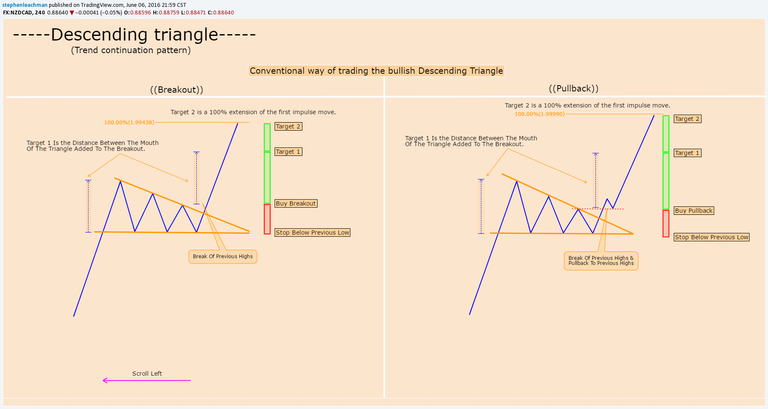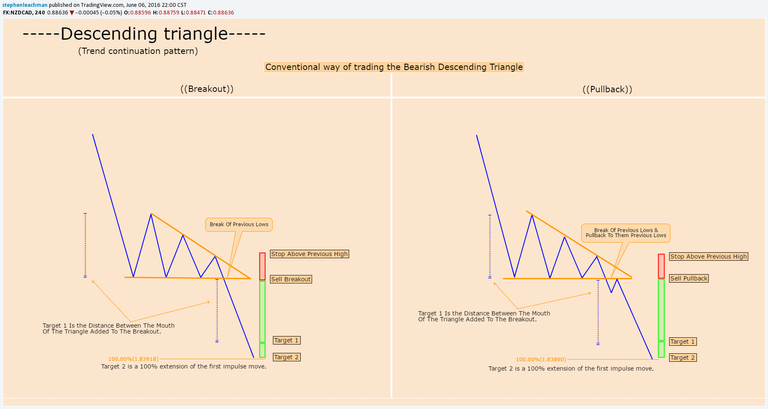Descending triangles are mainly considered continuation patterns but they
also can be used as reversals. This pattern starts with an initial impulse move
followed by a point of consolidation. As price consolidates it makes lower highs
and equal lows forming the descending triangle . the momentum builds up and
usually breaks out back into the direction of the trend. If price does break
back into the direction of the trend then look for a continuation and the target
is the Distance Between The Mouth Of The Triangle Added To The Breakout but
preferably I use a 100% extension of the first impulse move.

-----Breakout-----
(1) Wait for a clear Decending Triangle to form.
(2) Buy a break of the previous high.
(3) Stop below the previous Lows. (The Triangles Low)
(4) Target 1 Is the Distance Between The Mouth Of The Triangle Added To The Breakout.
(5) Target 2 is a 100% extension of the first impulse move.
-----PullBack-----
(1) Wait for a clear Desending Triangle to form.
(2) Wait for price to break and close above previous high.
(3) Buy pullback at prior high.
(4) Stop below the previous Lows. (The Triangles Low)
(5) Target 1 Is the Distance Between The Mouth Of The Triangle Added To The Breakout.
(6) Target 2 is a 100% extension of the first impulse move.

-----Breakout-----
(1) Wait for a clear Descending triangle to form.
(2) Sell when price breaks the triangle low.
(3) Stop Abouve the previous High.
(4) Target 1 Is the Distance Between The Mouth Of The Triangle Added To The Breakout.
(5) Target 2 is a 100% extension of the first impulse move.
-----PullBack-----
(1) Wait for a clear Descending triangle to form.
(2) Wait for price to break and close below triangles low.
(3) Sell pullback at the broken lows.
(4) Stop Abouve previous High.
(5) Target 1 Is the Distance Between The Mouth Of The Triangle Added To The Breakout.
(6) Target 2 is a 100% extension of the first impulse move.